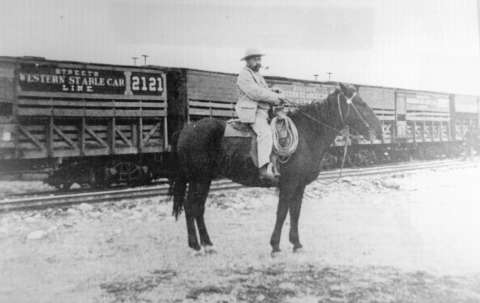Notes from a Pioneer Rancher
By Brian Beauvais
When I first read about the open-range cattle ranchers of the Bighorn Basin, Otto Franc’s name always came up. Usually, however, details were frustratingly few. The same facts were batted about, largely devoid of insights into who the man actually was and how he lived his life.

Primary sources relating to the activities of folks in the Bighorn Basin rarely mentioned Franc, unlike some of his neighbors. It seems some of the early ranchers on the Wyoming frontier could be as flamboyant and showy as any of their urban counterparts. But it appears Otto Franc mostly kept his head down and focused on his ranch. This made him hard to truly pin down.
I became more interested in Franc through another project I’m still working on regarding early hunting and wildlife conservation in northwest Wyoming. Franc and some of his neighbors started the Wyoming Game Protective Association, a local organization whose members hoped to curb the destruction of wildlife by hide hunters and careless sportsmen. While researching these men and their work, I realized that Franc was instrumental in developing the Bighorn Basin from a lawless backwater into a thriving ranching center.
Last winter I finally decided to read the transcripts of Otto Franc’s journals, the originals of which are at the McCracken Research Library at the Buffalo Bill Center of the West in Cody. For a few months during the dark Wyoming winter, I would sit in front of my fireplace surrounded by my dogs and pore over the entries. I imagined I was reading Franc’s journal in a situation similar to his when he wrote in his thick-walled adobe house on the Pitchfork Ranch.
I did my best to research the many names and events he referred to. Some were recorded elsewhere. Others will probably be lost. What I learned from the diaries I hoped to finally turn into an accessible portrait of the man who has loomed large on the history of the Bighorn Basin but still seems something of an enigma.
I compiled the other sources on Franc and his Pitchfork Ranch and compressed the information into a summary of his life. I hope it will shed some light on a remote, but important corner of Wyoming’s past.
